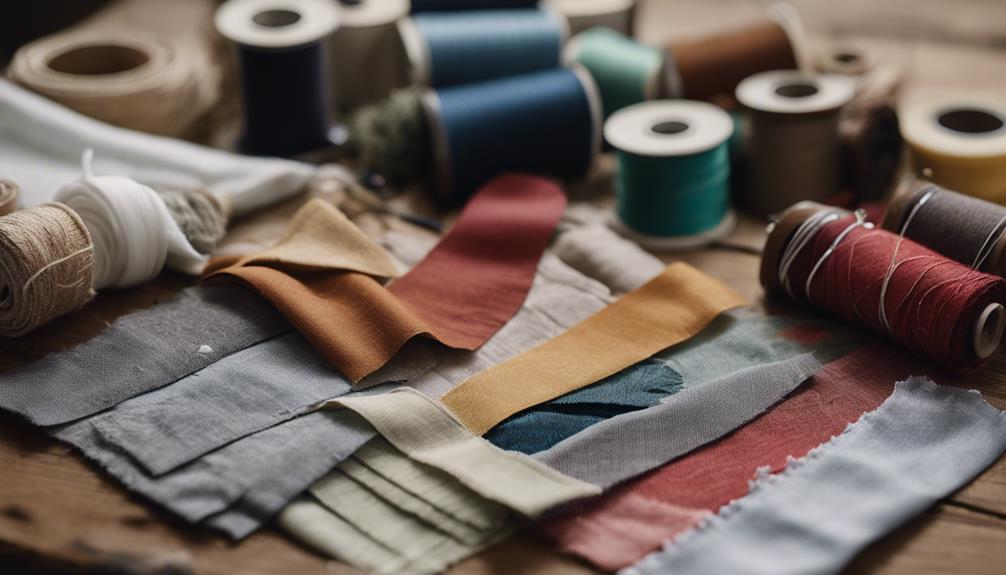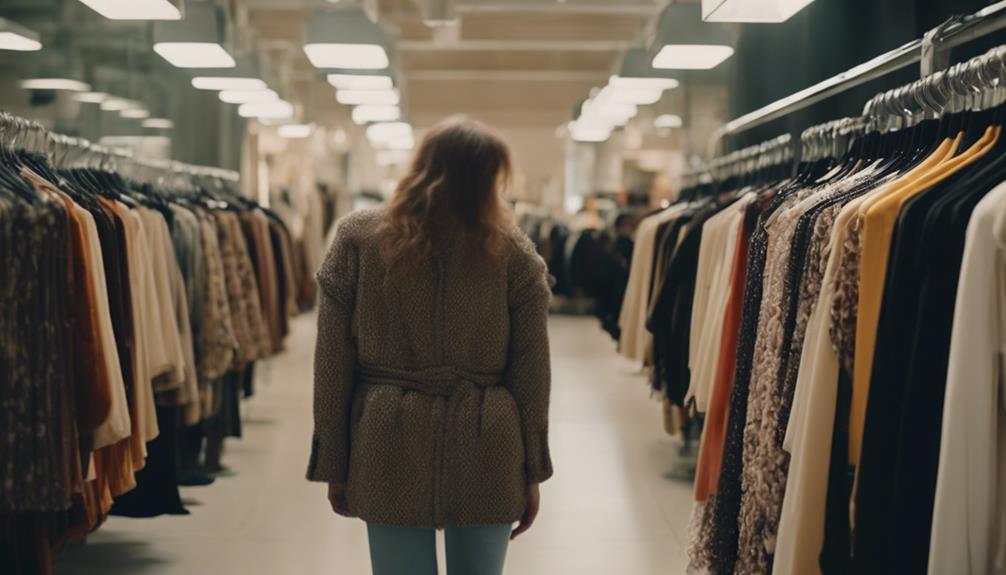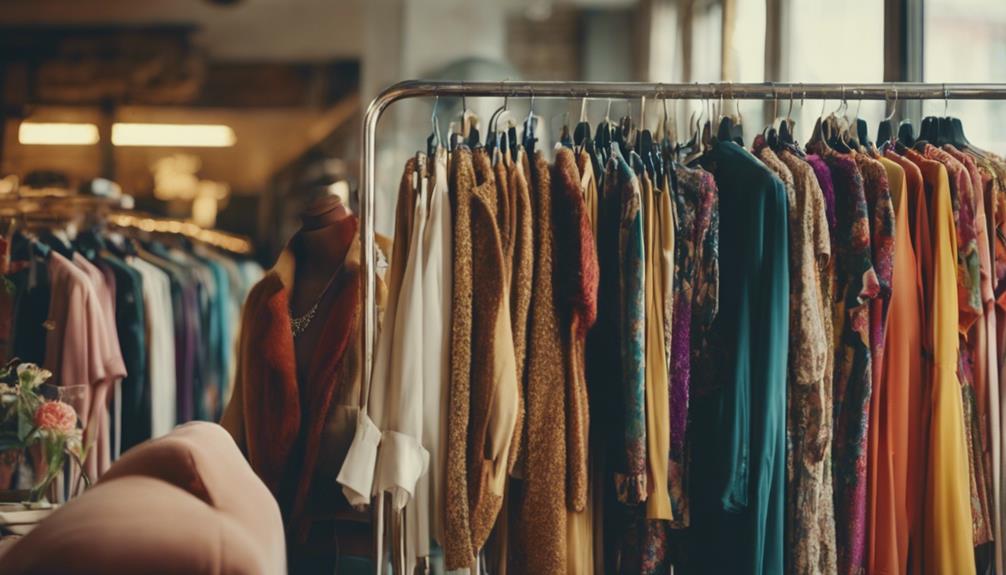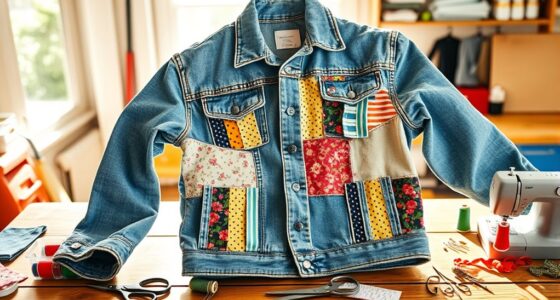Sustainable fashion may appear pricey at first due to higher production costs associated with ethical practices and quality materials. However, think about this: investing in long-lasting pieces often results in long-term savings as they outlast fast fashion items. Additionally, by supporting these brands, you are ensuring fair wages for workers and minimizing environmental impact. The cost per wear can ultimately make sustainable choices more cost-effective in the long run. While initial prices might be steep, the value you receive is substantial. If you wish to learn more about the true value of sustainable fashion, continue exploring the intricacies of this expanding movement.
Key Takeaways
- Sustainable fashion often has higher upfront costs due to ethical production and eco-friendly materials, like organic cotton.
- Higher quality and durability of sustainable garments lead to lower cost-per-wear compared to fast fashion.
- Investment in ethical fashion supports fair wages for workers, reflecting the true value of clothing.
- Smaller ethical brands often offer competitive pricing, challenging the stereotype of sustainability as expensive.
Understanding Sustainable Fashion Costs
Understanding sustainable fashion costs means recognizing that ethical practices and eco-friendly materials often lead to higher production expenses, which can result in higher retail prices compared to fast fashion.
Sustainable fashion brands focus on quality over quantity, prioritizing slow fashion principles. As a result, you might see higher price points, especially when materials like organic cotton—about 25% more than polyester—are used.
However, it's crucial to evaluate the true cost of clothing. Investing in ethical fashion often means investing in fair wages for workers and reducing environmental impact. While the upfront costs can be steeper, the cost per wear can be considerably lower over time, as these garments are made to last.
Moreover, many smaller ethical fashion brands are becoming increasingly competitive, offering prices similar to conventional options. This accessibility helps shift the perception that sustainable choices are always more expensive.
Ultimately, when you choose sustainable apparel, you're supporting sustainable practices that benefit both people and the planet, making the initial investment worthwhile.
The Role of Ethical Production

Ethical production plays an essential role in transforming the fashion industry by guaranteeing fair wages and safe working conditions for garment workers. When you choose ethical brands, you're supporting a system that values people over profit. These brands often go beyond legal requirements, advocating for living wages that allow workers to escape the cycle of poverty.
While sustainable clothing often comes with a higher price tag, this cost reflects the investment in ethical practices and eco-friendly materials. For instance, organic cotton can be 25% more expensive than conventional polyester, yet it reduces the impact on the planet. Smaller ethical brands usually produce in limited quantities, avoiding the overproduction common in fast fashion, which leads to lower prices due to bulk manufacturing.
Your support for ethical production not only helps guarantee fair wages but also promotes better working conditions throughout supply chains. By making conscious purchasing decisions, you align your values with social and environmental responsibility, contributing to a more sustainable fashion industry. In doing so, you play a part in creating a more equitable world for those who make your clothing.
Evaluating Quality and Materials

When you evaluate quality and materials in sustainable fashion, you'll often find that natural fibers offer superior durability compared to the synthetic options prevalent in fast fashion.
Sustainable fashion brands prioritize ethical and sustainable practices, leading to the use of materials like organic cotton, which can be 25% more expensive than polyester. This investment reflects a commitment to quality over price.
Fast fashion brands tend to produce clothing that wears out quickly, increasing overall waste and long-term costs for you as a consumer. By opting for garments from sustainable brands, you're not just paying a higher price tag; you're investing in pieces that have a better cost-per-wear value.
While the initial cost may be higher, the longevity and durability of these items often make them more economical in the long run.
Additionally, ethical production practices, which include fair wages and eco-friendly materials, contribute to the overall cost of labor, impacting the final price.
Ultimately, when you choose sustainable fashion, you're making a conscious decision that values quality and sustainability over the fleeting allure of lower prices.
Consumer Perceptions of Price

Consumer perceptions of price in sustainable fashion often reflect a belief that ethical options are inherently more expensive than mainstream alternatives, despite many smaller brands offering competitive pricing. Understanding these perceptions can help you make informed choices about your fashion purchases.
Here are some key points to take into account:
- Quality vs. Quantity: Sustainable brands often focus on quality, meaning you might pay more upfront but save in the long run.
- Fair Wages: Ethical brands prioritize fair wages for garment workers, contributing to the perceived higher price of clothing.
- Durability: Investing in sustainable fashion can lead to lower prices over time, as durable pieces last longer and require fewer replacements.
- Consumer Awareness: Growing awareness of sustainability pushes demand for ethical fashion, challenging the notion that it's always more expensive.
Cost Per Wear Analysis

How can analyzing the cost per wear transform your approach to sustainable fashion and help you make smarter purchasing decisions? By focusing on cost per wear, you can see the true value of sustainable clothes.
For instance, a $200 ethically made dress worn 40 times costs you just $5 per wear, while several $40 dresses worn only twice each would set you back $20 per wear. This stark contrast highlights the long-term savings that come from investing in higher quality, durable garments.
The fashion industry often pushes consumers towards quantity, but mindful purchasing emphasizes quality. When you prioritize sustainable clothes, you reduce the frequency of replacements and waste, ultimately saving money.
Yes, sustainable fashion might have a higher initial price tag, but that often reflects superior craftsmanship and longevity.
The Future of Ethical Fashion

Investing in sustainable fashion not only reshapes your wardrobe but also paves the way for a future where ethical practices become the norm in the industry. As you embrace this movement, you can help drive significant change by focusing on the following:
- Education on sustainability: Understand the true impact of your choices to make informed decisions.
- Quality over quantity: Prioritize well-made pieces that last, reducing the need for constant replacements.
- Support sustainable brands: Seek out companies that prioritize ethical practices in their production.
- Advocate for systemic change: Encourage a shift in industry standards that embrace sustainability at all levels.
The future of ethical fashion relies on your awareness and action. As consumer demand for sustainable options grows, brands will be compelled to adapt, leading to a more responsible fashion industry.
Frequently Asked Questions
Does Sustainable Fashion Have to Be Expensive?
Sustainable fashion doesn't have to be expensive. You can find affordable options in smaller ethical brands, second-hand shops, and by restyling your wardrobe. Investing in quality pieces often saves you money in the long run.
Do People Really Care About Sustainable Fashion?
You might be surprised, but many people do care about sustainable fashion. They recognize its importance for the environment and communities, yet often struggle to align their values with affordable choices, creating a challenging paradox. Thankfully, there are increasing options for sustainable fashion explained through accessible resources such as online guides and blogs. By educating themselves on the principles and practices of sustainable fashion, individuals can make informed choices that align with their values. This knowledge empowers consumers to support ethical and eco-friendly clothing brands while also promoting a healthier planet for future generations.
Is Sustainable Fashion for the Rich?
Sustainable fashion isn't just for the rich. You'll find affordable options among ethical brands and second-hand shops. Investing in higher-quality pieces can save you money in the long run, proving sustainability's accessible to everyone.
Does Sustainable Fashion Really Work?
Yes, sustainable fashion really works by promoting ethical practices and high-quality materials. When you invest in durable pieces, you benefit from long-lasting value, minimizing waste and encouraging a more mindful approach to your wardrobe choices.
Conclusion
In the garden of fashion, sustainable choices bloom with purpose.
While they might seem pricier at first glance, these investments nurture a richer wardrobe that thrives over time.
Just like a sturdy tree outlasts fragile flowers, quality pieces offer longevity and style.
So, when you're tempted to pick the quick, cheap options, remember: the most beautiful gardens are grown with care and intention, yielding rewards that far outweigh the initial cost.
Choose wisely, and watch your style flourish!









